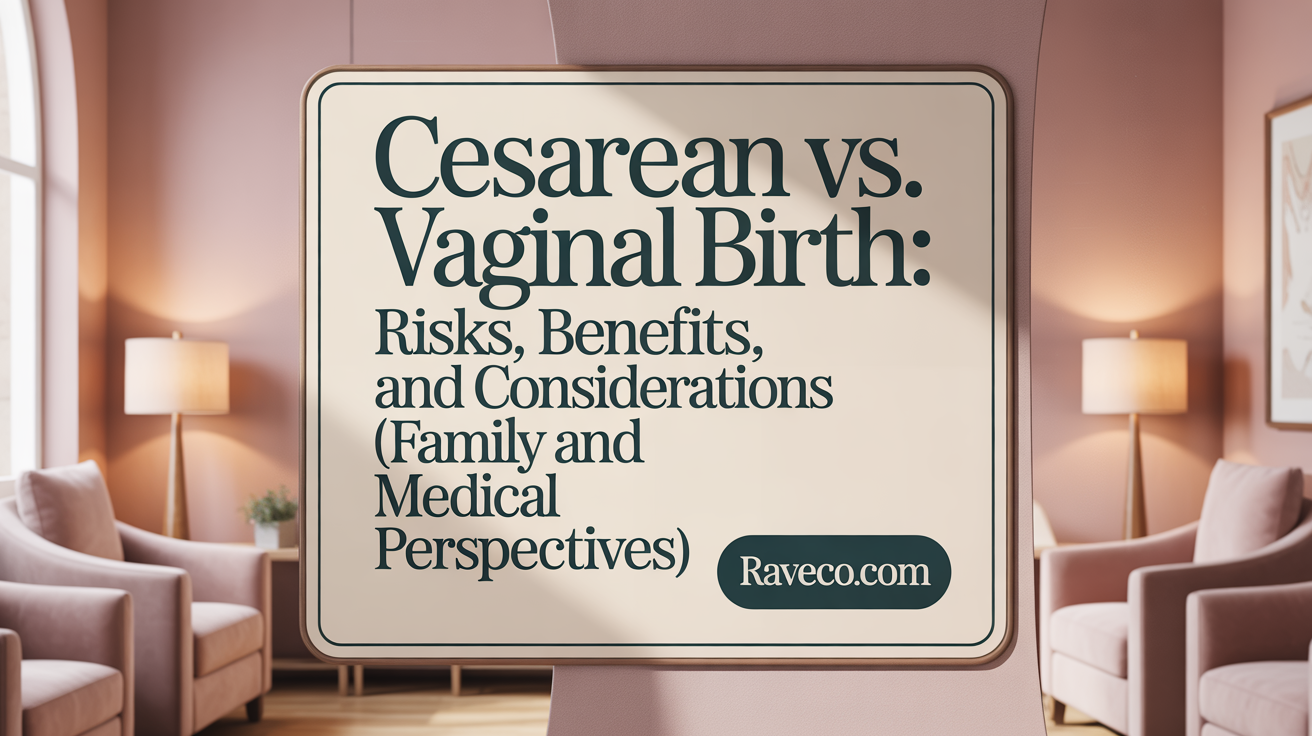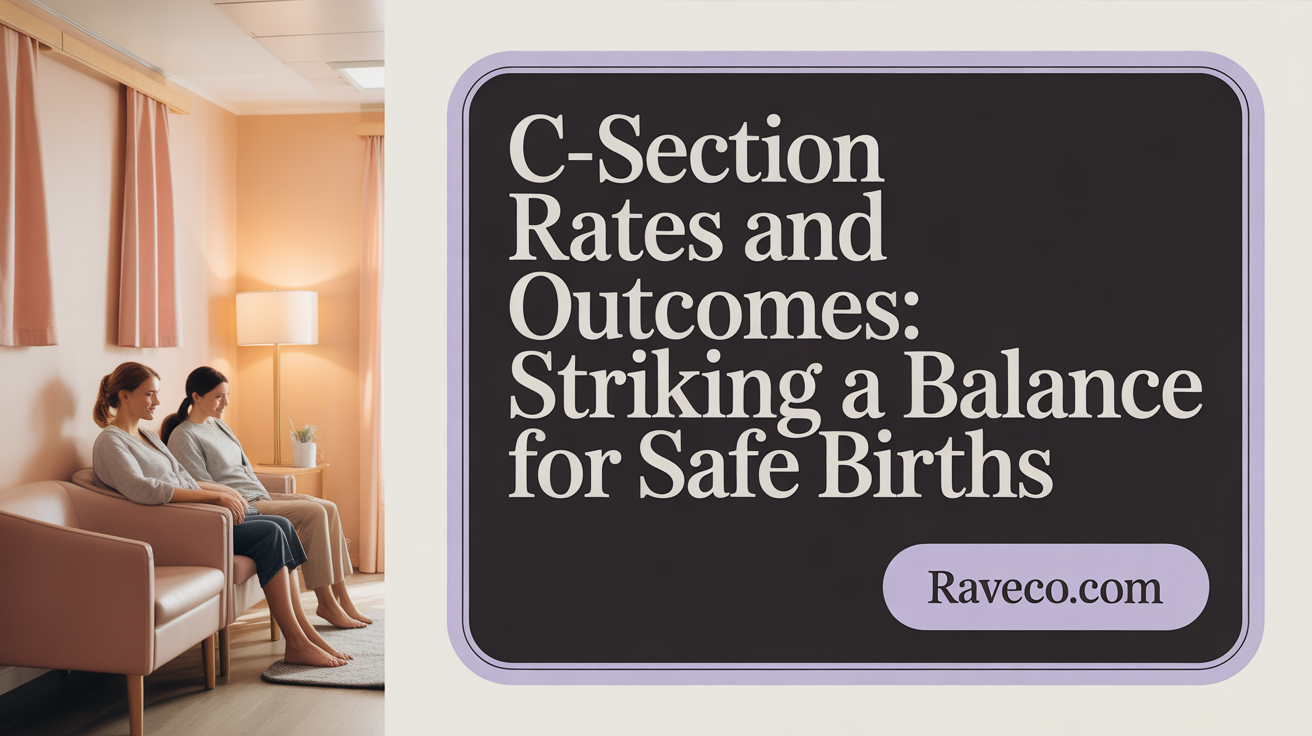Recognizing the Right Time to Address Female Infertility: Key Indicators and Expert Care in Queens

Understanding the Stakes of Cesarean Deliveries
Cesarean sections (C-sections) are a common surgical procedure, increasingly used worldwide for delivering babies. While vital in specific medical situations, the rise in cesarean rates, particularly among low-risk pregnancies, raises concerns about unnecessary interventions and their repercussions. This article explores why maintaining a low C-section rate matters for expecting mothers, examining health benefits, risks, and factors influencing cesarean delivery, and emphasizes informed decision-making to promote safer births.
The Importance of Reducing C-Section Rates Among Low-Risk Mothers
Why is it important to reduce C-section rates?
Reducing C-section rates among low-risk women is essential because unnecessary cesarean deliveries can carry significant health risks for both mothers and babies. Maternal complications such as infections, blood clots, longer hospital stays, and increased recovery time are more common after C-sections.
For babies, a C-section can lead to breathing difficulties, higher chances of NICU admissions, and potential long-term health issues like asthma and allergies. While C-sections are definitely needed in certain circumstances—like fetal breech presentation—they are often overused when vaginal birth would be safer.
Data shows that the current rate of low-risk C-sections exceeds recommended levels. In 2018, about 25.9% of low-risk women with no prior births delivered via C-section, which increased slightly to 26.3% in 2022. The targeted rate for this group is 23.6%, according to standards like those from the Leapfrog Group.
Efforts to lower these rates are vital for improving maternal and infant health. Lowering unnecessary surgeries reduces the risk of future pregnancy complications, supports natural birth processes, and aligns with public health goals to promote safer childbirth practices. Overall, focusing on reducing low-risk C-sections can lead to better health outcomes and reduce healthcare costs associated with surgical births.
Health Benefits and Safety Considerations of Maintaining a Low C-Section Rate
 Maintaining a low C-section rate is associated with significant health benefits for both mothers and newborns. When cesarean deliveries are performed only when medically necessary, it reduces the risk of maternal complications such as infections, excessive bleeding, blood clots, and long-term issues like uterine scarring. These complications can lead to more complex future pregnancies, including risks of placental problems and uterine rupture.
Maintaining a low C-section rate is associated with significant health benefits for both mothers and newborns. When cesarean deliveries are performed only when medically necessary, it reduces the risk of maternal complications such as infections, excessive bleeding, blood clots, and long-term issues like uterine scarring. These complications can lead to more complex future pregnancies, including risks of placental problems and uterine rupture.
For newborns, lower C-section rates correlate with fewer respiratory problems, as vaginal delivery facilitates the transfer of beneficial bacteria and promotes lung development. Babies born vaginally are less likely to require NICU admission and tend to have better long-term health outcomes, including lower risks of allergies, asthma, and obesity.
Research shows that unnecessary C-sections contribute to longer recovery periods for mothers, typically extending their hospital stay and increasing discomfort. They also carry operative risks such as injury during surgery and postoperative infections.
The World Health Organization recommends keeping C-section rates around 10%, believing that rates higher than this do not result in improved maternal or infant health and may, in fact, cause harm. Excessively high rates can deepen health disparities, especially among vulnerable populations.
By promoting evidence-based practices that favor vaginal births in clear-cut cases and ensuring cesareans are performed only when justified, healthcare systems can enhance safety, lower costs, and support better long-term health outcomes for mothers and children alike.
Reducing unnecessary C-sections aligns with public health goals to optimize maternal and neonatal health, mitigate healthcare costs, and decrease disparities. Overall, a balanced approach that prioritizes the well-being of both mother and baby through appropriate birth methods is essential for health improvement.
Comparing Cesarean Delivery to Vaginal Birth: Risks and Implications

What are the risks and implications of cesarean deliveries compared to vaginal births?
Cesarean deliveries carry a higher level of risks for mothers compared to vaginal birth. These risks include increased chances of infections such as wound or uterine infections, blood clots, and longer hospital stays. Recovery from a C-section generally takes about six to eight weeks, which is longer than the two to four weeks typically needed after vaginal delivery.
For newborns, cesarean sections can lead to respiratory issues, as babies born via C-section are more prone to respiratory distress and may require oxygen therapy or NICU admission. Additionally, babies delivered by C-section are moins exposed to beneficial bacteria from the birth canal, which play a vital role in developing a healthy immune system. This exposure is linked to lower risks of certain childhood allergies, asthma, and immune-mediated diseases.
While cesarean sections are crucial in emergency situations—such as fetal distress, breech presentation, or placental problems—they are often overused for non-medical reasons. Elective C-sections, chosen by maternal preference without medical necessity, can increase future health complications, including placental attachment disorders like placenta previa or placenta accreta, and risks related to multiple subsequent pregnancies.
In contrast, vaginal birth offers a shorter recovery period, fewer maternal health issues, and transfer of protective microbiota to the infant. Overall, when medically appropriate, vaginal delivery typically results in healthier mother and baby outcomes, reducing the long-term risks associated with surgical birth choices.
Impact of C-Section Rates on Maternal and Neonatal Outcomes

How do C-section rates impact maternal and neonatal health outcomes?
The rate of cesarean sections significantly influences both maternal and neonatal health, with outcomes varying based on whether the procedures are medically necessary. When performed for appropriate reasons—such as fetal distress, breech presentation, or placental complications—C-sections can prevent birth injuries and maternal complications, potentially reducing mortality and severe morbidity.
However, high or unnecessary C-section rates pose risks. For mothers, these include increased chances of bleeding, infections, blood clots, and longer recovery times. Multiple repeat C-sections raise the risk of placental issues like placenta previa or accreta, which can threaten future pregnancies. For babies, delivery via C-section is associated with higher incidences of respiratory difficulties, due to less exposure to beneficial bacteria and the absence of the hormonal and physical stimuli that occur during labor. Studies also link cesarean deliveries to higher rates of allergies, asthma, obesity, and immune system disorders later in childhood.
Globally, overly high C-section rates do not necessarily correlate with better survival outcomes, emphasizing the importance of balanced, evidence-based use. Excessive use of cesarean sections increases healthcare costs and can contribute to disparities—racial and socioeconomic differences in C-section frequency influence overall health outcomes.
Optimizing cesarean rates requires adherence to clinical guidelines, enhancing provider decision-making, and promoting vaginal delivery when safe. Effective strategies include patient education, hospital policy reforms, and implementing support systems like assisted vaginal delivery techniques. When used appropriately, C-sections can save lives; when overused, they may lead to avoidable health complications, affecting both mothers and their children.
| Aspect | Effect | Additional Details |
|---|---|---|
| Maternal health risks | Increased bleeding, infection, recovery time | Risks are higher in unnecessary procedures |
| Neonatal health risks | Respiratory distress, allergies, obesity | Higher in planned C-sections without medical need |
| Long-term effects | Uterine rupture, placental problems | Repeated C-sections increase future pregnancy risks |
| Healthcare costs | Higher for C-section than vaginal birth | Nearly 50% more expensive |
| Disparities in outcomes | Worse outcomes among certain racial groups | Black women face higher C-section rates |
Reducing unnecessary cesarean births is crucial for improving childbirth safety, reducing costs, and ensuring equitable health outcomes for mothers and children.
Influences on C-Section Rates: Hospital Practices and Staffing
 Hospital policies and overall organizational culture significantly impact cesarean section rates. Institutions that prioritize low intervention and favor natural labor management tend to have lower elective and intrapartum C-section rates compared to hospitals with more rigid protocols or time-pressured environments.
Hospital policies and overall organizational culture significantly impact cesarean section rates. Institutions that prioritize low intervention and favor natural labor management tend to have lower elective and intrapartum C-section rates compared to hospitals with more rigid protocols or time-pressured environments.
Clinician attitudes and practices also play a crucial role. Some healthcare providers may prefer cesarean delivery due to convenience, perceived safety, or to avoid potential complications and litigation risks. This can lead to a higher number of cesareans performed without clear medical necessity.
Staffing levels, particularly the availability of trained nurses, midwives, and obstetricians, influence labor outcomes. Research shows that hospitals with sufficient nurse staffing—meeting standards set by organizations like AWHONN—are associated with lower cesarean rates. Adequate staffing ensures continuous monitoring and timely intervention, promoting vaginal delivery when possible.
Non-medical factors also contribute to the trend. Profit motives in private healthcare settings can incentivize higher cesarean rates, as surgeries often generate more revenue. Additionally, fears of malpractice litigation may prompt clinicians to opt for cesarean delivery as a precaution.
Understanding these factors is essential to developing strategies to reduce unnecessary C-sections. Standardizing care protocols, increasing staff resources, and cultivating a safety-focused environment are effective measures. Promoting a culture that values evidence-based practices and supports laboring women through natural processes can lead to healthier outcomes and lower surgical intervention rates.
| Factor | Impact on C-Section Rates | Additional Notes |
|---|---|---|
| Hospital policies and culture | Higher rate in institutions with rigid protocols | Emphasizes the importance of institutional environment |
| Clinician attitudes | Influences decision to perform elective C-section | Preferences and fears may override clinical indications |
| Staff availability | Lower rates with better staffing levels | Sufficient nurses and specialists enable optimal labor management |
| Profit motives and litigation | Can drive unnecessary cesareans | Financial and legal concerns favor cesarean deliveries |
| System improvements | Standardized guidelines reduce rates | Adoption of evidence-based practices is crucial |
More research and policy efforts should focus on creating supportive, resource-rich environments that empower clinicians to prioritize safe, natural labor whenever medically feasible. This approach not only decreases unnecessary surgeries but also promotes the overall well-being of mothers and babies.
Medical Considerations and Informed Decision-Making in Birth Planning

What are the medical considerations and important elements of informed decision-making regarding birth options?
When choosing between vaginal delivery and cesarean section, women and healthcare providers need to carefully consider medical factors such as the risk of complications, the presence of high-risk pregnancy conditions, and evidence-based guidelines.
Medical considerations include understanding that cesarean deliveries can prevent harm in specific situations like breech presentation, placenta previa, or fetal distress. Conversely, unnecessary cesareans may lead to increased risks such as infections, blood clots, longer recovery times, and complications in future pregnancies. Research from systematic reviews and randomized trials indicates that a C-section rate higher than about 19-23% does not improve maternal or infant health outcomes.
Informed decision-making involves providing women with clear, accurate, and tailored information about their options. This means explaining the benefits, risks, and alternatives of vaginal births and cesarean procedures using evidence-based research. Ensuring women understand that most pregnancies can proceed safely via vaginal delivery helps foster informed choices.
Respecting patient autonomy is crucial. Women have the right to make voluntary decisions about their delivery options, access their medical records, and seek second opinions. Recognizing their cultural beliefs, personal values, and birth philosophies helps support individualized care.
Effective shared decision-making combines healthcare expertise and patient preferences. Decision aids—tools designed to present information clearly about risks, benefits, and choices—can enhance understanding and satisfaction. These aids empower women to participate actively in their birth planning, aligning care with their values.
Ultimately, supporting autonomous and informed choices necessitates healthcare systems and providers to maintain open, respectful communication. This approach respects social and emotional factors influencing decisions and ensures women are active partners. By fostering comprehensive, adaptable, and empathetic discussions, the goal is to optimize safety, satisfaction, and health outcomes for mothers and babies.
Addressing Unnecessary C-Sections: Strategies and Broader Implications
Why is it important to reduce unnecessary C-sections?
Reducing unnecessary cesarean sections is crucial for improving maternal and neonatal health. Overuse of C-sections raises the risk of maternal complications like hemorrhage, infections, blood clots, and uterine scarring, which can affect future pregnancies. Neonates born via unnecessary cesareans are at increased risk for respiratory problems requiring NICU admissions and long-term issues such as allergies and asthma. Additionally, when performed without medical indications, C-sections contribute to higher healthcare costs—up to 50% more than vaginal deliveries. These unnecessary procedures also involve longer recovery times and potential harms for the baby and mother.
Promoting vaginal birth when appropriate, enhancing patient education, and implementing supportive care models are effective strategies to reduce unwarranted cesareans. Minimizing these surgeries not only improves safety and health outcomes but also alleviates economic burdens on healthcare systems.
What percentage of C-sections are emergency procedures?
In the context of cesarean deliveries, emergency procedures account for approximately 14% of all C-sections. For example, a study involving 2,836 pregnant women reported that 22% of participants had cesarean births, with around 14% of these classified as emergencies. While national data in 2023 indicates that about 32.3% of live births were via C-section, specific figures for emergency C-sections are not explicitly detailed, but consistent data suggest roughly one in seven to one in eight of all C-sections are performed emergently.
Emergency C-sections are vital for cases of fetal distress or obstetric emergencies, but their proportion, relative to planned or elective procedures, remains a smaller segment. A focus on reducing non-essential C-sections can help lower both emergency and overall cesarean rates, thereby reducing associated risks.
Broader Strategies and Systemic Efforts
Many hospitals worldwide have adopted strategies to curb unnecessary C-sections. These include establishing clinical guidelines that emphasize allowing longer labor durations, encouraging operative vaginal delivery when appropriate, and promoting labor management practices that support natural birth processes.
Policy initiatives play a significant role, with some regions implementing quality improvement programs measuring and publicly reporting hospital performance on C-section rates. For instance, California’s hospital benchmarking initiatives and Louisiana’s Perinatal Quality Collaborative are examples of efforts to monitor, analyze, and reduce low-risk cesarean rates.
Furthermore, multidisciplinary approaches involving obstetricians, nurses, midwives, and patient education efforts have shown success. Improved nurse staffing levels are associated with lower rates of C-sections, as better monitoring and labor support facilitate vaginal births.
Incorporating patient-centered care, promoting vaginal birth after cesarean (VBAC), and limiting elective early-term C-sections are grounded in international guidelines from organizations like WHO, ACOG, and NICE. These guidelines stress that C-sections should be based on medical necessity rather than convenience or patient request alone.
Reducing unwarranted cesareans promises to enhance maternal and child health, decrease healthcare costs, and promote more equitable birth outcomes across diverse populations. Overall, a combination of policy, practice change, and patient education is essential for achieving safer, more appropriate use of cesarean delivery.
Striving for Safer, Informed Births
Maintaining a low cesarean section rate is a vital goal that benefits expecting mothers and their babies by minimizing unnecessary medical interventions and associated risks. While cesarean deliveries are indispensable in certain medical conditions, avoiding unwarranted procedures supports better health outcomes, reduces complications, and alleviates healthcare costs. Achieving this balance requires collaborative efforts involving hospitals, care providers, and patients—empowered through evidence-based information and respectful decision-making. By prioritizing low-risk vaginal births and informed choices, the healthcare community can help ensure that childbirth is as safe and healthy as possible for all mothers and their newborns.
References
- Why you should ask about your hospital's C-section rate
- Reduce cesarean births among low-risk women with no prior births
- C-Section Awareness Month: Addressing Rates and Reducing ...
- Planned elective cesarean section: A reasonable choice for some ...
- Low-Risk Cesarean Delivery | Medicaid
- Reducing Low-Risk Cesarean Births - Let's Get Healthy California
- Reducing Unnecessary C-Sections in California





.png)